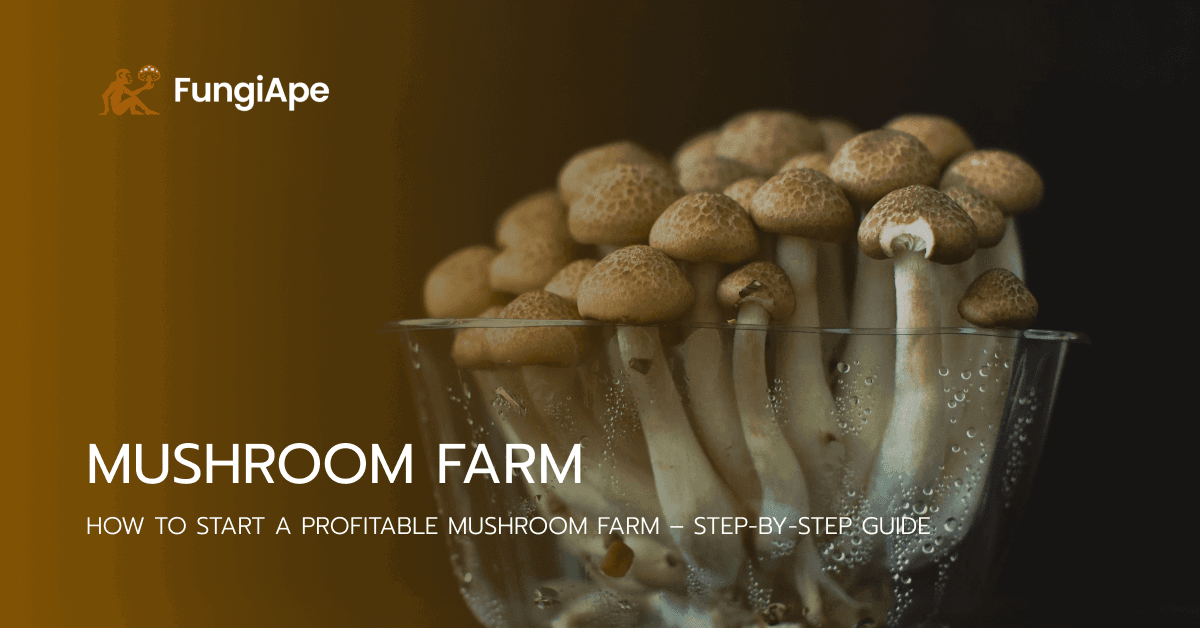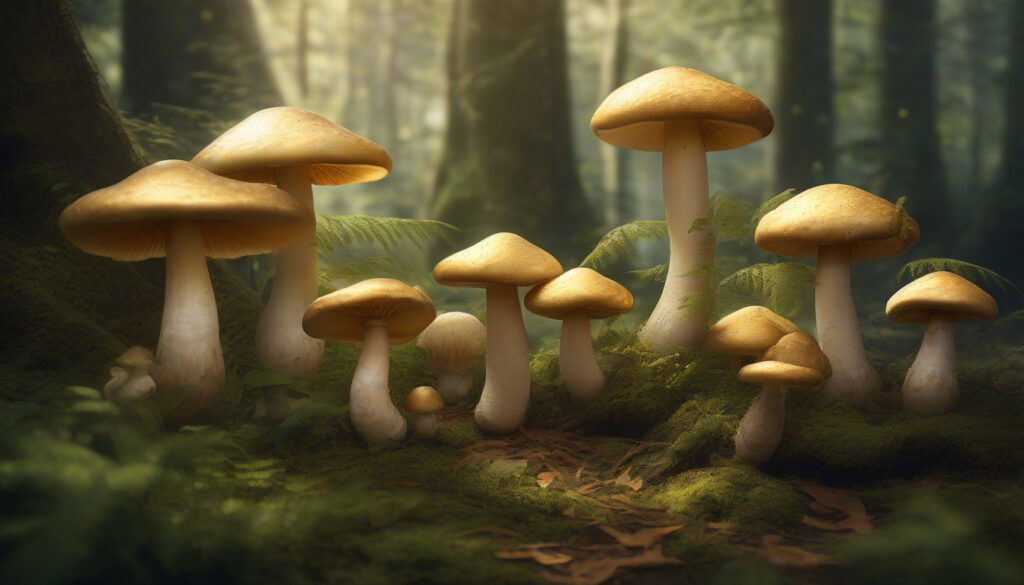- Content:
- How to Start a Mushroom Farm
- Step 1: Identify Your Customers and Market
- Step 2: Choose Your Mushroom Type
- Step 3: Gather Essential Materials
- Step 4: Organize Your Growing Space
- Step 5: Managing Growth and Harvesting
- Step 6: Selling Your Mushrooms
- Final Thoughts
Mushroom farming is an incredibly rewarding venture, offering both financial opportunities and sustainable agricultural practices. Whether you’re interested in growing mushrooms for local markets, restaurants, or personal consumption, understanding the key steps to success will save you time, money, and effort.
Mushrooms are in high demand due to their nutritional value and culinary versatility. As a sustainable food source, they require minimal space and can be grown using agricultural waste products. Unlike traditional crops, mushrooms have a relatively short growing cycle, meaning you can see returns on your investment faster.
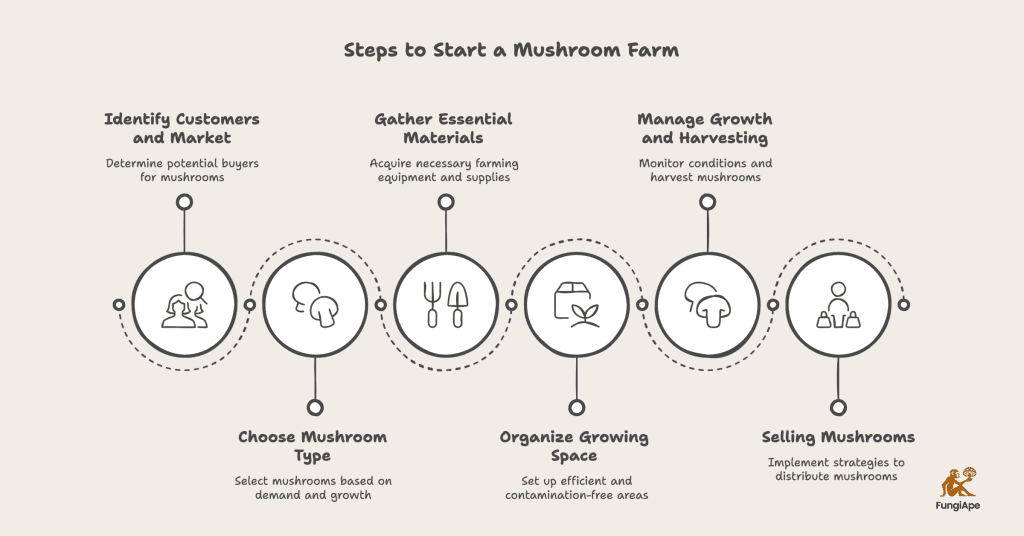
How to Start a Mushroom Farm
Step 1: Identify Your Customers and Market
Before diving into mushroom farming, it’s crucial to determine who your customers will be. Because mushrooms have a short shelf life, having buyers lined up before harvest is essential.
- Farmers’ Markets: Selling directly to consumers offers higher profit margins and builds relationships with buyers.
- Restaurants and Chefs: High-end restaurants often seek specialty mushrooms like Lion’s Mane, Shiitake, and Oyster mushrooms.
- Grocery Stores & Distributors: Although this route provides large volume sales, you may receive lower margins due to middlemen.
- Health-Conscious Consumers: Areas with a strong vegetarian and vegan market often have consistent demand for mushrooms.
Pro Tip:
Do market research by visiting local farmers’ markets and grocery stores to see what mushrooms are available. Find gaps in the market and target those opportunities.
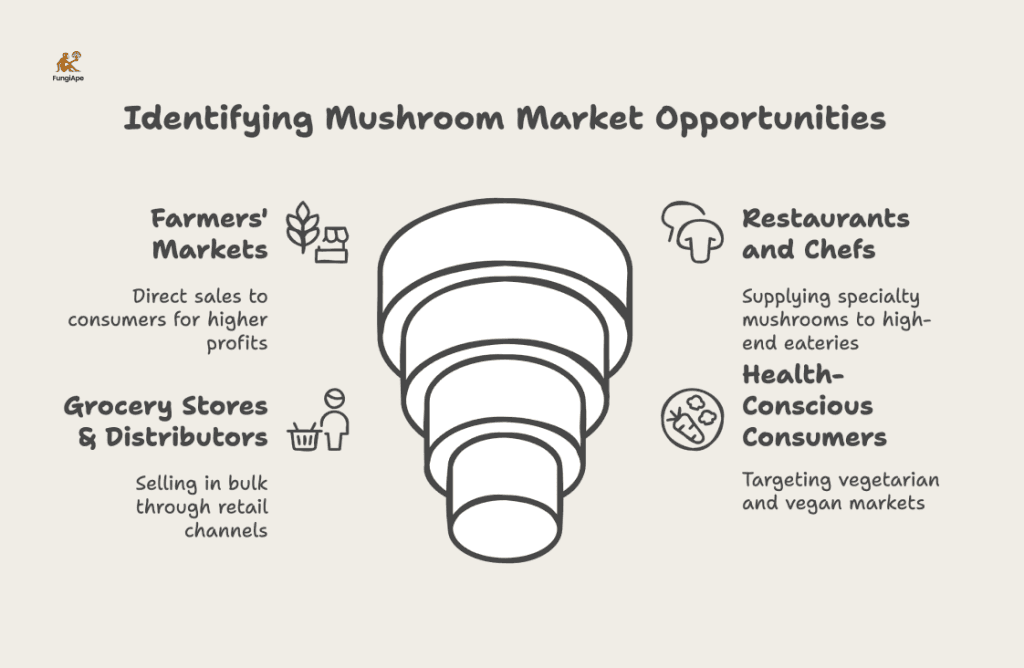
Step 2: Choose Your Mushroom Type
Different mushrooms have varying growing requirements and market demand. Here are some popular choices:
- Oyster Mushrooms: Fast-growing, easy to cultivate, and highly profitable.
- Lion’s Mane: Gaining popularity for its health benefits and unique taste.
- Shiitake: High in demand and known for their rich, umami flavor.
- Button Mushrooms: Commonly sold in grocery stores, but require specialized facilities.
Step 3: Gather Essential Materials
Setting up a mushroom farm requires several key materials. A well-equipped lab is necessary for culturing mushrooms, including flow hoods, sterilizers, and other consumables. Many growers use liquid cultures, which allow for faster colonization and a lower risk of contamination compared to spore syringes. Liquid cultures provide a scalable method for inoculating substrate and are a great option for both beginners and commercial farmers.
Choosing the right substrate is equally important, as mushrooms grow on materials such as hardwood pellets, straw, or agricultural waste like hemp hurd. Securing a consistent and affordable supply of substrate will ensure steady production.
The fruiting stage requires grow tents and shelving, which should be adjustable to accommodate different mushroom types while optimizing space. Since mushrooms thrive in high humidity (85-99%), humidifiers and sensors help maintain optimal growing conditions, and automated humidity controls can reduce manual labor. Proper lighting cycles regulate growth, while an effective airflow system prevents CO2 buildup, ensuring healthy yields.
Once harvested, mushrooms need proper packaging to maintain freshness. Boxes, coolers, and storage materials help with transportation and sales.
So, to set up your mushroom farm, you’ll need:
- Lab Equipment
- Substrate
- Grow Tents and Shelving
- Humidifiers and Sensors:
- Lighting and Airflow System
- Packaging Supplies
Cost-Saving Tip:
Look for waste materials from local industries, like sawdust from woodworkers or agricultural byproducts, to lower production costs. Some farms also use spent coffee grounds as a cost-effective substrate alternative.
Read more: How to Grow Mushrooms at Home

Step 4: Organize Your Growing Space
A well-organized farm increases efficiency and reduces contamination risks.
Recommended Setup:
Lab Space: The cleanest area where you culture and inoculate your mushrooms. This area should have proper ventilation and sterilization protocols in place to minimize contamination risks.
Storage & Work Area: Where substrates are prepared, and incubation takes place. Shelves should be labeled, and workspaces should be easy to clean and disinfect regularly.
Fruiting Space: Where mushrooms grow. This area requires careful humidity, temperature, and airflow management. Dividing fruiting areas into smaller sections can help contain contamination if an issue arises.
For those looking for a simpler setup, grow boxes are an excellent option. These pre-made environments come with built-in humidity control and are ideal for beginners or small-scale growers. Grow boxes allow you to produce mushrooms with minimal space and effort while ensuring optimal growing conditions.
Common Mistakes:
- Not dividing fruiting areas: If contamination occurs, a divided setup prevents the entire crop from being affected.
- Poor ventilation: Mushrooms exhale CO2 and need fresh oxygen for quality yields. Ensure proper air exchange rates to maintain healthy growth.
- Overcrowding: Placing too many mushroom bags or blocks in a small space can lead to insufficient airflow and poor fruiting conditions.
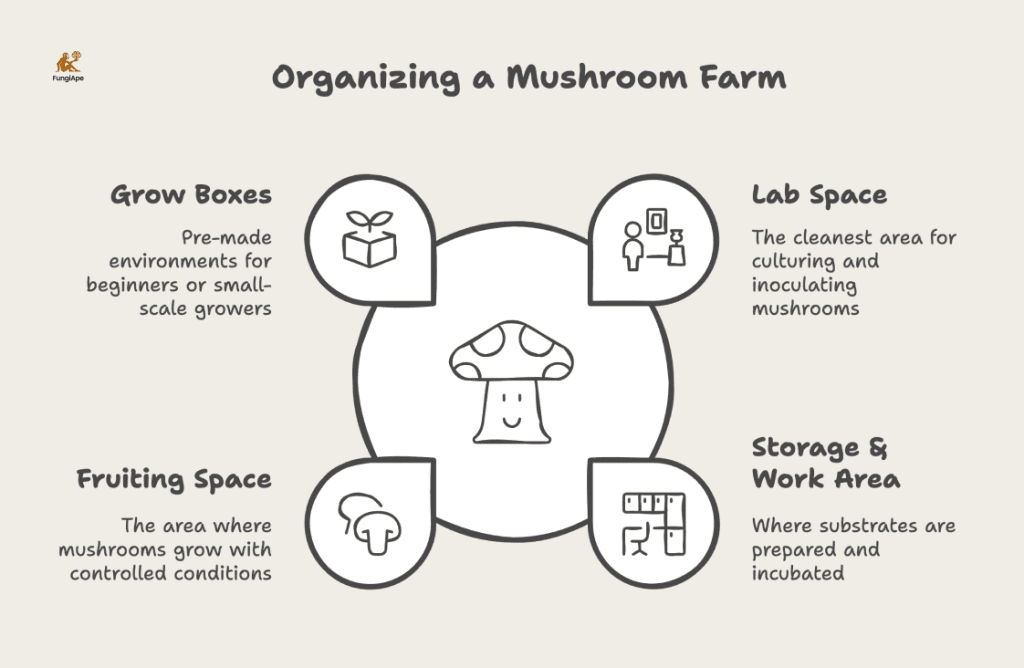
Step 5: Managing Growth and Harvesting
Once your mushrooms begin fruiting, ensure you:
- Monitor Humidity: Keep levels between 85-99% to prevent drying or excessive moisture. A consistent humidity level prevents deformed mushrooms and maximizes yields.
- Control Temperature: Maintain 50-75°F depending on the mushroom variety. Some exotic mushrooms require more specific temperature ranges, so research accordingly.
- Manage Airflow: Fresh air exchange is crucial for proper mushroom development. High CO2 levels can result in elongated, weak stems and deformed caps.
- Identify Readiness for Harvest: Different mushrooms have specific indicators for optimal harvesting time. For example, Oyster mushrooms should be harvested before their caps flatten completely.
- Use Proper Harvesting Techniques: Gently twist or cut mushrooms at the base to avoid damaging the mycelium. Using sharp, sterile tools helps prevent contamination.
- Store and Transport Effectively: Fresh mushrooms should be stored in breathable packaging and refrigerated if necessary to extend their shelf life.
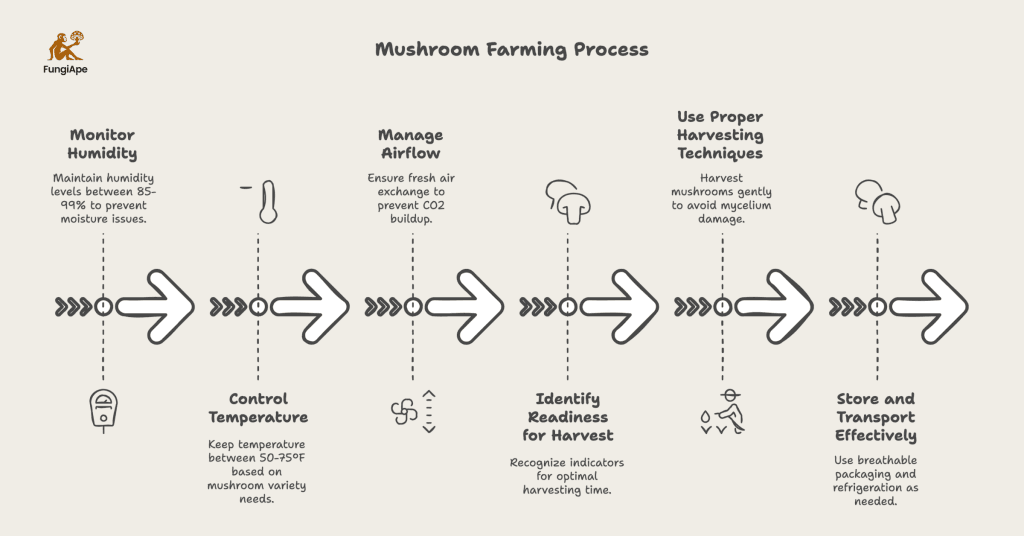
Step 6: Selling Your Mushrooms
Your distribution strategy determines your farm’s profitability. Here are the best ways to sell mushrooms:
- Direct-to-Consumer: Farmers’ markets or online sales offer the best margins.
- Subscription Boxes: Monthly delivery services attract loyal customers.
- Wholesale to Restaurants & Grocers: Requires consistency but can generate large sales.
Final Thoughts
Starting a mushroom farm is an exciting opportunity, but success depends on careful planning. Focus on identifying your market, choosing the right mushrooms, gathering materials efficiently, and organizing your space for maximum efficiency. With patience and persistence, a small mushroom farm can grow into a thriving business.
Interested in learning more? Consider exploring in-depth resources and networking with local farmers to improve your techniques. Happy farming!
Read more:

